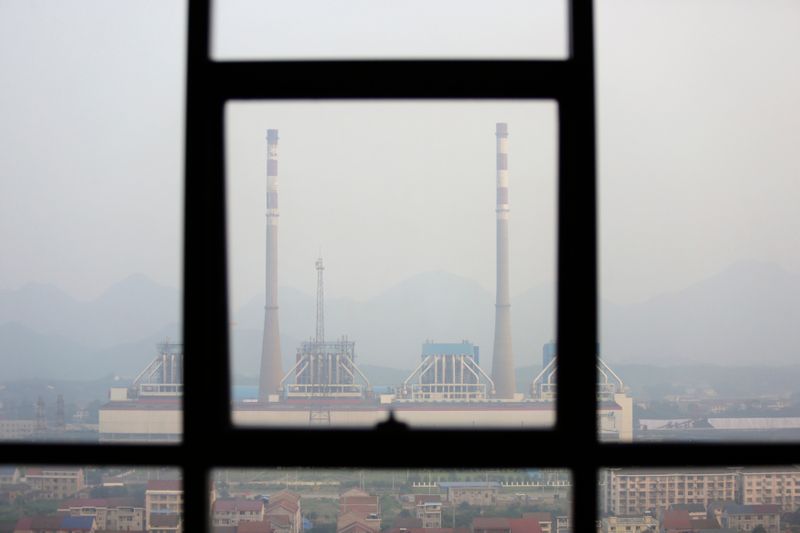BEIJING (Reuters) -China expects trading to commence on its long awaited national carbon emissions trading scheme (ETS) this month, and sources aware of the plans expect a launch ceremony to be held on Friday.
China is the world's top greenhouse gas emitter. Its nationwide scheme had been repeatedly delayed, due partly to concerns over the accuracy and transparency of emissions data.
China expects its ETS to become the largest carbon market in the world by volume.
Later on Wednesday, the European Union is expected to unveil an ambitious plan to tackle climate change, including an overhaul of its ETS.
Here is what we know about China's ETS:
WHAT IS THE ETS?
China has set up the trading platform of the national ETS on the Shanghai Environment and Energy Exchange.
As in other carbon markets, emission permits are allocated to participating firms, which they can use to cover their own emissions or sell on the exchange.
It is part of China's plans to use market mechanisms to help bring emissions to a peak before 2030 and to net zero by 2060.
China has already tried to put a price on carbon by setting up pilot carbon emission exchanges in Beijing, Tianjin, Shanghai, Chongqing, Guangdong, Hubei, and Shenzhen.
WHO WILL TRADE?
Phase one will cover 2,225 power plants, responsible for over 4 billion tonnes of carbon dioxide emissions per year, about 40% of the national total.
But the allocation of permits is based on "carbon intensity" or the amount of emissions per unit of power generation, rather than absolute levels, which experts say could reduce its effectiveness.
A coal-fired power plant will be granted free permits to cover its verified emissions. But even if it exceeds that verified amount by 100%, it will be required to buy no more than 20% of the surplus on the market.
Meanwhile, gas-fired power plants do not have compliance obligations, meaning they can sell surplus allowances and have no need to buy even if they emit more than their allocation.
WHY POWER FIRST?
Thermal-fired power plants, including coal and gas, accounts for more than 60% of China's total power capacity. The power sector contributes more than a third of its total carbon emissions.
Emission data from the sector is relatively easy to collect and verify, compared to other industries who have more complex production processes.
WHAT WILL BE THE PRICE?
China's carbon price is "hard to predict" a senior environment ministry official said adding that the average carbon price for 7 trial markets was around 40 yuan ($6.18) per tonne.
This is much cheaper than the average carbon price of 47.25 euros ($55.67) a tonne on the European Union ETS between 2021-2025, according to a survey by the International Emissions Trading Association (IETA)
WHAT COMES NEXT?
China aims to expand the ETS to cover eight high-emission industries, including petrochemicals, chemicals, building materials, non-ferrous metals, papermaking, steel, power generation and aviation, though the timescale is not yet known.
Financial institutions or individual investors will not be allowed to participate in trading in the early stage of the national ETS, but institutional investors will be included once the trading mechanism matures.

($1 = 6.4743 yuan)
($1 = 0.8488 euros)